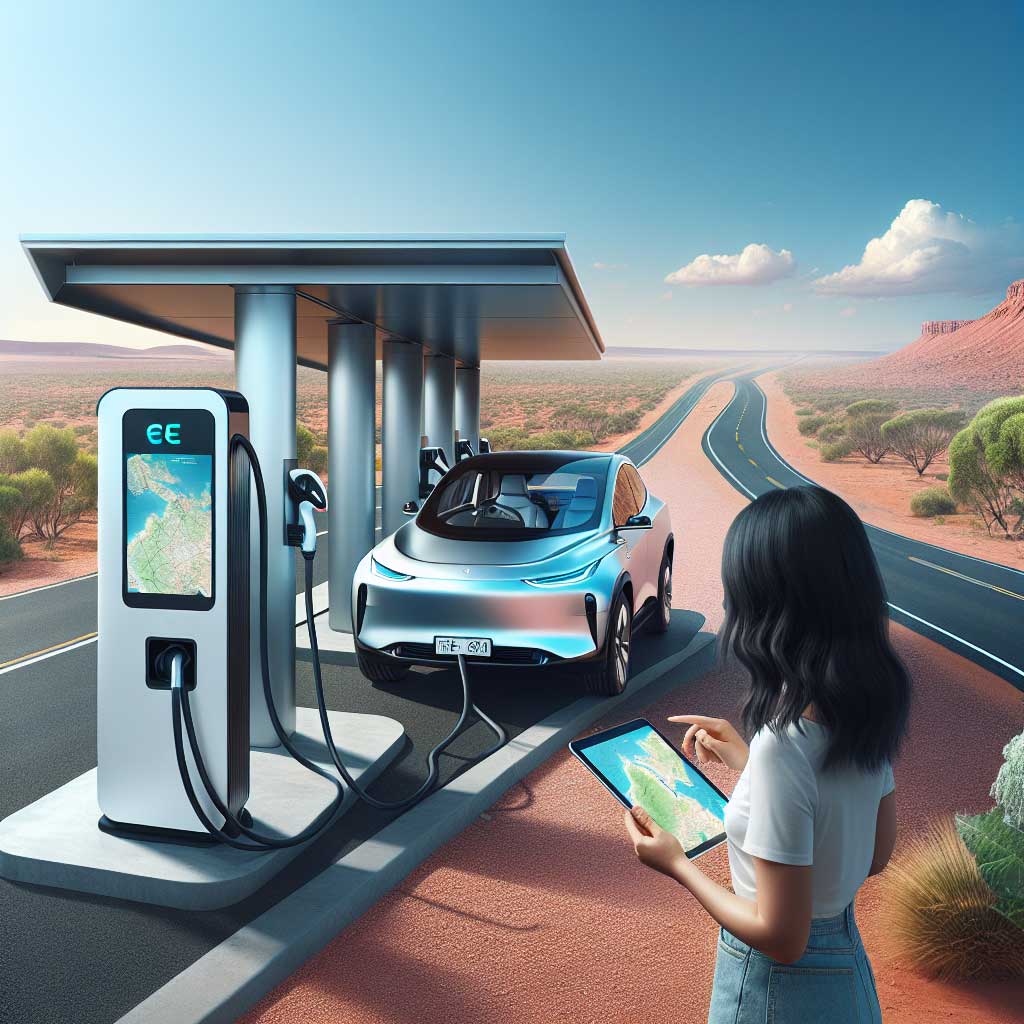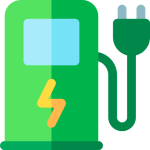
The transition to an electric vehicle is exciting, but for many new owners, public charging can be a source of anxiety. Unlike filling up with petrol, public EV charging requires a mix of technical know-how, planning, and adherence to an unwritten set of social rules: Public EV charging etiquette Australia.
As the Australian network of chargers rapidly expands, maintaining courtesy and efficiency is key to ensuring a positive experience for the entire EV community. This guide will help you master the unspoken rules, understand how to choose the right charger, and provide essential tips for finding public EV chargers so you never get stranded.
📱 The Essential First Step: Mastering the Map and the Apps
The days of simply driving until you see a servo sign are over. Successful public charging starts long before you pull up to the bay.
1. The Core Navigation Tool: PlugShare
Before you rely on any single charging network’s app, download PlugShare.4This crowd-sourced app is the most comprehensive tool for finding public EV chargers across Australia, regardless of the network operator (Chargefox, Evie, AmpCharge, Tesla, etc.).
- Real-Time Status: PlugShare often shows if a charger is occupied or out of service, based on community check-ins.
- User Reviews: Check the comments for critical information: Was the charger working last week? Is the parking spot awkward? Does it require a BYO cable?
- Filtering: Use the filters to only display chargers compatible with your car (e.g., CCS2 or Type 2) and your required speed (e.g. 50 kW DC Fast Charger).
2. The Network Apps (For Payments and Monitoring)
While PlugShare helps you find the charger, you need the network’s dedicated app (or an RFID card) to use it. Install the apps for the major Australian networks (Chargefox, Evie, AmpCharge) ahead of your first big road trip. Pre-loading your payment details saves valuable minutes when others are waiting.
⚡ The Unspoken Rules of Australian Charging Etiquette
Public chargers are a shared resource. Respecting these rules is the cornerstone of good public EV charging etiquette Australia.
Rule #1: Don’t “Camp” – Move When You’re Done!
This is the golden rule. The charger is a refuelling bay, not a parking spot.
- Monitor Your Charge: Use the charger app or your vehicle’s app to monitor your charging session remotely.
- Set a Reminder: Once your car reaches your desired State of Charge (SoC), move it immediately. Idle fees are now common across major networks (like Tesla Superchargers and some other DC fast chargers), and they are often expensive ($0.50 to $1.00 per minute) precisely to discourage camping.
Rule #2: Honour the 80% Rule on DC Fast Chargers
Rapid DC chargers work fastest when the battery is mostly empty. As the battery approaches 80% State of Charge (SoC), the charging rate automatically slows down significantly to protect battery health.
- Be Considerate: If people are waiting in line for a DC fast charger, please unplug at 80% SoC, even if your destination requires 100%. The time it takes to gain the last 20% is often the same amount of time it took to charge from 20% to 80%, and you are unfairly hogging a valuable resource.
- Charge What You Need: Only take the charge required to comfortably reach your next destination (or your next planned charge stop).
Rule #3: Know Your Charger’s Purpose
There are two primary charging types in public spaces, and they require different courtesy rules:
| Charger Type | Location & Purpose | Etiquette Difference |
| AC Level 2 (e.g., Shopping Centres) | Designed for destination charging while you shop or dine. Parking may be permitted for the entire duration of your activity (usually a 2- 4 hour limit). | It’s more acceptable to walk away, but still monitor and move once the time limit or charging session ends. |
| DC Level 3 (e.g., Highway Stations) | Designed for quick turnaround on road trips. People may be in a hurry. | Always stay nearby and be ready to move immediately, especially if there is a queue. |
Rule #4: Respect the Bay Markers
- No “ICEing”: Never park an Internal Combustion Engine (ICE) vehicle in a charging bay. This is widely illegal in most Australian states and territories (with fines of up to $$2,200 in some regions) and is the most frustrating charging blockage for EV owners.
- EVs Not Charging: Even if you drive an EV, if you are not plugged in and actively charging, you must not park in the bay.
🧐 How to Choose the Right Charger on Arrival
You’ve found the location, but there are multiple chargers. How do you select the best one?
1. Match Your Car’s Max Speed
This is a critical efficiency tip. If your car can only accept a maximum of 50 kW of power (common for some older models), do not plug into a 350 kW Ultra-Rapid Charger if a 50 kW charger is available.
- Why? You won’t charge any faster, and you will block the 350 kW charger from an EV (like a Kia EV6 or Hyundai IONIQ 5) that can draw that higher speed and significantly reduce their wait time.
2. BYO Cable Readiness
Always check the charger type before pulling up.
- AC Chargers: As discussed previously, the majority of public AC chargers are untethered (socket only). If you arrive without your Type 2 cable, you are stranded. Always have it ready in your boot.
- DC Chargers: These are always tethered (cable attached) for safety reasons.
3. Tidy Up for the Next User
When you are finished, ensure you leave the charging area neat and safe:
- Return Cables: Neatly coil the tethered DC cables and return the plug to its holster. Allowing cables to lie on the ground risks damage from being run over or becoming a trip hazard.
- Secure the Plug: If you used your own cable, ensure the public socket’s flap or door is closed and the area is tidy.
🙏 Building Community Trust
The Australian charging network is still in its infancy compared to the established fuel network. Every EV driver plays a role in creating a positive, efficient, and reliable system. Practising excellent public EV charging etiquette Australia-wide reduces stress, minimises delays, and encourages more Australians to make the switch to electric driving.
By planning ahead with your charging apps and adhering to these common-sense rules, you contribute directly to a better future for all EV owners on the road.
Frequently Asked Questions
What apps should I have installed before a road trip?
Install a comprehensive mapping app that aggregates chargers, plus the dedicated apps for the networks you expect to use. Set up payment details and sign in beforehand. Where available, enable roaming options so you can use multiple networks with fewer sign‑ins.
How long should I charge at a public DC fast charger?
Charge only as long as you need to reach your next planned stop safely. For most trips, charging to about 80% at a DC fast charger is the most time‑efficient approach unless you need more range to reach a destination without charging opportunities.
Do I need to bring my own cable?
Bring a Type 2 cable for untethered AC chargers (common at shopping centres and workplaces). Most DC fast chargers are tethered and do not require you to bring a cable. If you own a vehicle with an uncommon connector, carry any necessary adapters recommended by the manufacturer.
Are idle fees common and enforced?
Many networks now apply idle or overstay fees to discourage vehicles from occupying bays after charging. Enforcement varies by operator and location, but fees are increasingly used and can be significant – move your car promptly once charging is complete.
What should I do if someone is blocking a charger?
If another vehicle is blocking a charger (either ICEing or EV not charging), report it via the network app or to site management if possible. If the vehicle remains, document the situation (photos, time) and follow local council or operator guidance for reporting and enforcement.
About EV Evolution
EV Evolution is the leading online platform dedicated to Australian electric vehicle owners and enthusiasts. We foster a vibrant community, delivering essential EV news and insights, and enhancing user engagement through our innovative, AI-powered chatbot for dynamic discussions. Our mission is to empower Australian electric vehicle owners and enthusiasts by fostering a vibrant, AI-driven online community that connects, informs, and advances the nation’s electric vehicle landscape.




